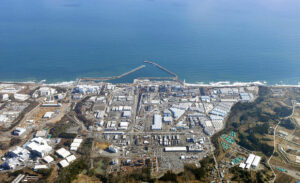TOKYO — Japan said on Tuesday it will start releasing more than 1 million metric tons of treated radioactive water from the wrecked Fukushima nuclear power plant on Aug. 24, putting into motion a plan that has drawn strong criticism from China.
The plan, approved two years ago by the Japanese government as crucial to decommissioning the plant operated by Tokyo Electric Power Company (Tepco), has also faced criticism from local fishing groups, who fear reputational damage and a threat to their livelihood.
“I have asked Tepco to swiftly prepare for the water discharge in accordance with the plan approved by the Nuclear Regulation Authority, and expect the water release to start on August 24, weather conditions permitting,” Prime Minister Fumio Kishida said on Tuesday morning.
The announcement comes a day after the government said it had won “a degree of understanding” from the fishing industry over the release of the water, even as a fishing group said it still feared the reputational damage would ruin livelihoods.
The first batch of water that will be released starting Thursday will total 7,800 cubic meters over about 17 days, Tepco said at a briefing held Tuesday.
That water will contain about 190 becquerels of tritium per liter, below the World Health Organization drinking limit of 10,000 becquerels per liter, according to Tepco. A becquerel is a unit of radioactivity.
Japan has said that the water release is safe. The International Atomic Energy Agency (IAEA), the U.N. nuclear watchdog, greenlighted the plan in July, saying that it met international standards and that the impact it would have on people and the environment was “negligible.”
About 56% of respondents to a survey conducted by Japanese broadcaster FNN over the weekend said they supported the release, while 37% opposed.
“The IAEA and many other countries have said it’s safe, so I believe it is. But fishermen are facing so many problems so the Japanese government needs to do something to convince them,” said 77-year-old NGO worker Hiroko Hashimoto.
Despite assurances, some neighboring countries have expressed skepticism over the safety of the plan, with Beijing emerging as the biggest critic. Foreign ministry spokesman Wang Wenbin said in July that Japan had shown selfishness and arrogance, and had not fully consulted the international community about the water release.
China bans seafood imports from 10 prefectures in Japan, including Fukushima and the capital, Tokyo.
South Korean activists have also protested the plan, although Seoul has concluded from its own study that the water release meets international standards and said it respects the IAEA’s assessment.
Mr. Kishida said on Tuesday that he believed an “accurate understanding” of the matter was spreading in the international community.
“There is an understandable perception that all radioactive materials are always and everywhere dangerous… but not all radioactive materials are dangerous,” Tony Irwin, an honorary associate professor at the Australian National University, said in a note.
“Nuclear power plants worldwide have routinely discharged water containing tritium for over 60 years without harm to people or the environment, most at higher levels than the 22 TBq per year planned for Fukushima,” he added.
Japan says the water will be filtered to remove most radioactive elements except for tritium, an isotope of hydrogen that is difficult to separate from water. The treated water will be diluted to well below internationally approved levels of tritium before being released into the Pacific.
The water was used to cool the fuel rods of Fukushima Daiichi after it melted down in an accident caused by a huge tsunami in 2011 that battered Japan’s eastern coast.
A Japanese official said the first test results of the seawater after the discharge may be available at the start of September. Japan will also test fish in the waters near the plant, and make the test results available on the agriculture ministry’s website. — Reuters

